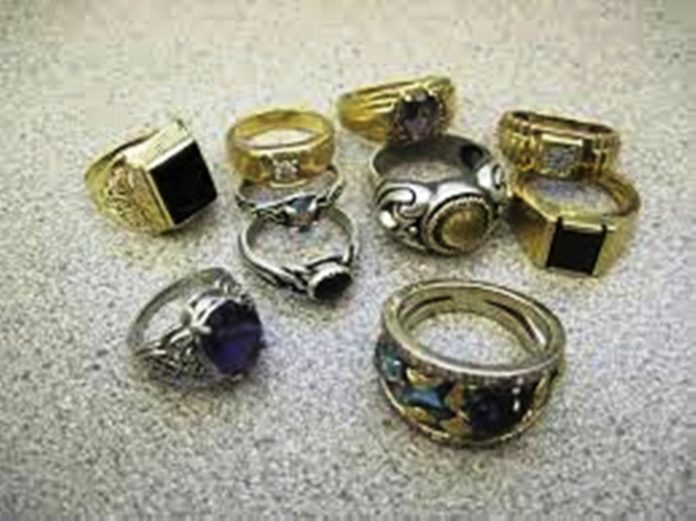The History of Rings
By: Martin Smith
During the Medieval period is when rings became popular. All classes of people wore rings from the poorest to the richest. Rings were typically made of iron, copper, silver, and gold. The material of the ring worn usually indicated the class of the wearer. It wasn’t until around the 14th century that faceted jewels appeared in rings.
Some cultures have rings typically associated with them. Cultures such as Native Americans use silver and turquoise in their jewelry. Early Christians used the Greek symbol, the Icthus, which resembles a fish. One of the best known is the Irish Claddagh that also has an intriguing story attached to it. Richard Joyce was among the crew of a fishing boat from the village of Claddagh, Ireland that was captured, he was to have been married that very same week. During slavery Richard Joyce was put to the trade of Goldsmith-ing. Through the years of capture neither married. Richard Joyce created a ring for his love with a heart for love, a crown for loyalty, and two hands.
After Joyce escaped capture, he returned to the village of Claddagh and was overjoyed to see his love again and to know she had never married. She always knew he would return to her. He gave her the ring that has become known as the Claddagh ring. If the Claddagh is worn on the right hand with the crown inward (toward the wrist) the heart is not yet committed. If it is worn on the right hand with the crown turned outward the wearer is committed to someone. Finally if it is worn on the left hand with the crown outward it means “Let our love and friendship reign forever, never to be separated.”
Rings are worn for a variety of reasons including adornment. There are rings given as a reward for a job well done such as the Super Bowl victory. They are given to represent commitment as in engagements and marriages. Women religious to signify their commitment to God also wear rings.
Rings can be made of almost any material now. They can be made from plastic, silver, gold, or copper, even wood. They can be made of ceramic materials as well. They can be of simple design or something as intricate as filigree.
They can be plain and simple or they can be adorned with jewels or gemstones, as in the case of birthstone rings. There is a birthstone for each month of the year and each has its own meaning. See the listing below.
January – Garnet
The gem of faith and truth; protects from poisons, thought to stop bleeding, cure sickness of the blood and infections.
February – Amethyst
Aids soldiers in battle, control evil thoughts, helps hunters to catch animals, and helps the owner be good in business.
March – Aquamarine
Sailors used aquamarine to gemstones to keep them safe and to prevent seasickness. It gives the wearer courage, foresight and courage
April – Diamond
Symbol of strength, courage, and invincibility. It is the ultimate gift of love. In 1477 Archduke Maxmillian of Austria gave Mary of Burgundy a diamond ring, thus starting the tradition of diamonds being given as engagement rings.
May – Emerald
Sharpened the wearer’s eyesight and mind. Travelers used them as protection against the hazards of long trips. The green color is said to give the owner power to predict the future.
June – Pearl
Freshwater pearls give the power of love, money, protection, and luck. It is said they give provide wisdom through experience and protect children from harm.
July – Ruby
Its red color is related to sex, passion, strength, health, physical energy, courage, and protection. It is associated with blood, birth, and death
August – Peridot
It is thought to bring the wearer good luck, peace, and success. Its powers include health, protection, and sleep. It attracts love, calms anger, eases anxiety and negative emotions
September – Saphire
Its powers include spiritual enlightenment and inner peace. It is said to aid in the healing of rheumatism, colic and mental illness
October – Opal
It has healing powers that aid inner beauty, faithfulness, and eyesight. It also aids in remembering past lives.
November – Yellow Topaz (Sanskrit for fire)
In the Middle Ages was thought to heal both physical and mental illnesses and prevent death. Citrine – also for November – Aids the kidneys, heart, digestive tract liver, and muscles. It promotes creativity, personal clarity and eliminates self-destructive tendencies.
December – Blue Topaz (Sanskrit for fire)
In the Middle Ages was thought to heal both physical and mental illnesses and prevent death. Turquoise – also for December – It attracts money, success, and love. It gives protection, healing, courage, friendship, and luck. It eases the mind and mental tension.
There are school rings, engagement rings, wedding rings, friendship rings and mothers rings (usually the birthstones of her children set on a band. The price range of rings can be anywhere from fifty cents (usually found in the toy machines you see in stores) to thousands of dollars and more or even higher.









